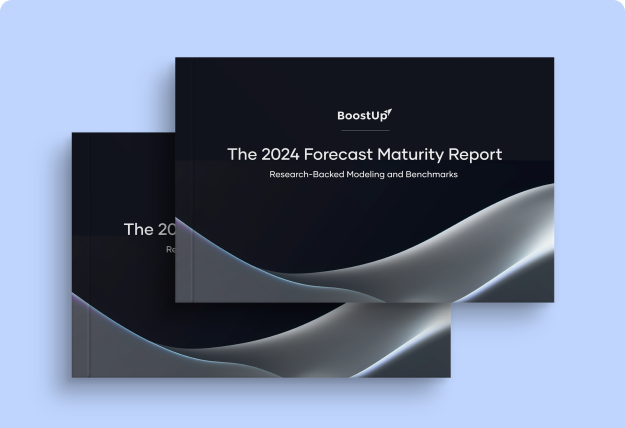The Revenue Blog /
How Activity Data Can Transform Forecasting in a Downturn?
How Activity Data Can Transform Forecasting in a Downturn?

Topics covered in this article
Activity data exhaust from our sales tech investments is the new oil of revenue operations in the 2020s. Most sales organizations use between 10 to 30 sales and marketing tools but poorly analyze the usage & activity data from those tools to make business decisions.
Primary activity data examples
Examples of primary activity data include:
- Buyer emails and the content of those emails
- Seller emails and the content of those emails
- Gong call recordings - sentiment, topics, talk time
- Buyer activity on your digital content, such as website data
- Intent data from Zoominfo, Demandbase, 6sense
- Slack interactions
- Meetings
- Number of Digital deal reviews in tools like BoostUp
- Who is using insights in revenue intelligence
- Deal updates by Reps
Predictors of deal velocity, pipeline quality & deal stalling
Two-way activity and its inverse lack-of-activity are the best predictors of deal velocity and pipeline quality. Lack of activity from the buyer is the same as buyer disengagement and is the best predictor of deal stalling.
 How can activity data help in forecasting?
How can activity data help in forecasting?
This activity data, when captured completely and matched accurately at the opportunity level, helps you de-risk your forecast in the following areas:
- The first week of the quarter → Activity-Adjusted-Pipeline tells you what your real sales pipeline for the quarter is. Grading all your pipeline based on lack of recent activity or engagement and overall risk reveals true pipeline and true pipeline coverage per rep. And if Activity-Adjusted-Pipeline and coverage are less than desired, you can now adjust sales strategy for the quarter much earlier in the cycle.
- Towards the mid/end of the quarter → Activity-based-Pull-Forward-Deals data on deals will tell you which deals are not in commit but should be since the activity and engagement levels on those deals are spiking up. Or maybe the rep is working the deal for the next quarter, with the potential for pulling that deal into the quarter hiding in plain sight
- More objective forecasts. If the deal activity data doesn’t align with the rep’s calls, it allows you to identify that specifically and resolve that with the rep’s forecasts. Activity data gives you another lens to verify and build confidence in the sales and revenue forecast.
- Account & opportunity allocation – Activity measures the rep’s pipe creation and progression efforts. Activity data can be easily turned into Time-Spent-Per-Opp, which is powerful in determining if the reps should still hold on to their old accounts and opportunities. Also, the # of accounts a rep can carry is partly a function of how many deals they can keep alive with good quality activity and engagement. Activity data allows us to go beyond the 20 accounts per rep model to a more personalized approach for each rep based on each rep's activity and effort levels.
When combined with a great revenue or sales forecasting process, activity data can result in the goldilocks zone of forecasting, which is 98-99% accurate.
What is Goldilock's zone of forecasting?
That’s when you are within 1-2% of your forecast. This allows you to make:
- Right headcount planning
- Right marketing budgeting and allocations
- Hire high-quality talent
Goldilock's zone of forecasting doesn’t happen on its own. It takes rigor, process, tools, and data to get it right. You need:
- You need to go deal-by-deal forecasting. Top-down gut calls aren’t enough.
- You must triangulate from calls, weighted averages, AI projections, and deal-by-deal roll-ups.
- You need to get overlays such as reps, SCs, and account managers to forecast and compare their forecasts with rep forecasts.
Read our advanced forecasting guide and enroll to our recent "Art and Science of Sales Forecasting" masterclass to learn more about getting to the Goldilocks zone of forecasting.




-Photoroom.png)